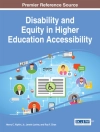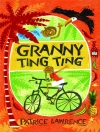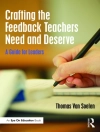‘Purposeful, realistic . . . and clearly written….the book renews my excitement for teaching writing, and for new teachers, the text offers suggestions from a voice of experience-all within the framework of NCLB legislation for differentiating teaching based on learners′ needs.’
-Julia Weinberg, Instructor
University of Nevada, Reno
Give students the power to express their thinking in writing and to use writing as a process for learning!
How can we improve students′ ability to write ‘constructed response’ to high stakes content area test items? How can we open for them the writing pathway to exploring and understanding informational texts? How can we help them develop the essential traits of proficient writing? Nationally recognized experts in literacy with experience in elementary, middle school, and university classrooms as well as consulting expertise, Barone and Taylor meld theoretical and practical considerations about writing instruction to explain how to teach each child to:
- Self-monitor to improve writing skills
- Grow in ability to write successful constructed response
- Use writing to process and stretch their own thinking
- Prepare for high stakes writing assessment
Improving Students′ Writing, K-8 brings together real-life examples, rubrics, reproducible aids and how-to′s for getting the most out of your writers.
Содержание
Preface
About the Authors
1. Writing to Learn and Understand
Purposes for Writing
Yesterday’s and Today’s Challenges
Literacy Connections in Your Classroom
The Three Hardest Parts About Helping Student Writers
Writing Together as a Way of Communicating, Learning, and Meaning-Making
2. Writing About Information
Informal Writing
Formal Writing
Connections Between Informational Text and Student Writing
Reading Informational Text to Learn About Structure
Final Thoughts
3. Narrative Writing
Narrative Writing
Writing Development
Gender and Writing
Informal Narrative Writing
Formal Narrative Writing
Final Thoughts
4. Writing With Purpose for Real Audiences
Part of a Classroom Culture
Writing for Real Audiences
Writing for Real Purposes
Analyzing Writing as a Craft
Revision
Responding to Writing
Editing
Writing With Reason
5. Preparing for High-Stakes Writing Assessments
Historical Perspective
Writing Assessment Methods
Writing Assessment Tasks
Helping Students With Trait-Scored Divergent and Convergent Assessment Items
Product Versus Process
Final Thoughts
6. Connecting Writing and Classroom Conversation
Academic Conversations
Final Thoughts
Afterword
Appendix
References
Index
Об авторе
Joan Taylor is a teacher-consultant who works with teachers and students in Title I schools in the Reno/Sparks area of Northern Nevada. She recently completed a dissertation on A History of Written Composition Instruction in U.S. Elementary Schools. Her research interests, in addition to historical and current perspectives on writing instruction, are focused on exploring teachers′ stories on learning and teaching.She has been a long-time middle school teacher in Washoe County Schools. She is also Nevada State Networks Writing Project Co-Director, and during the past several years has authored a number of federally funded state literacy grants from the U.S. Department of Education totaling approximately $53 million. These include the Nevada Reading Excellence Act and Nevada Reading First grants.












